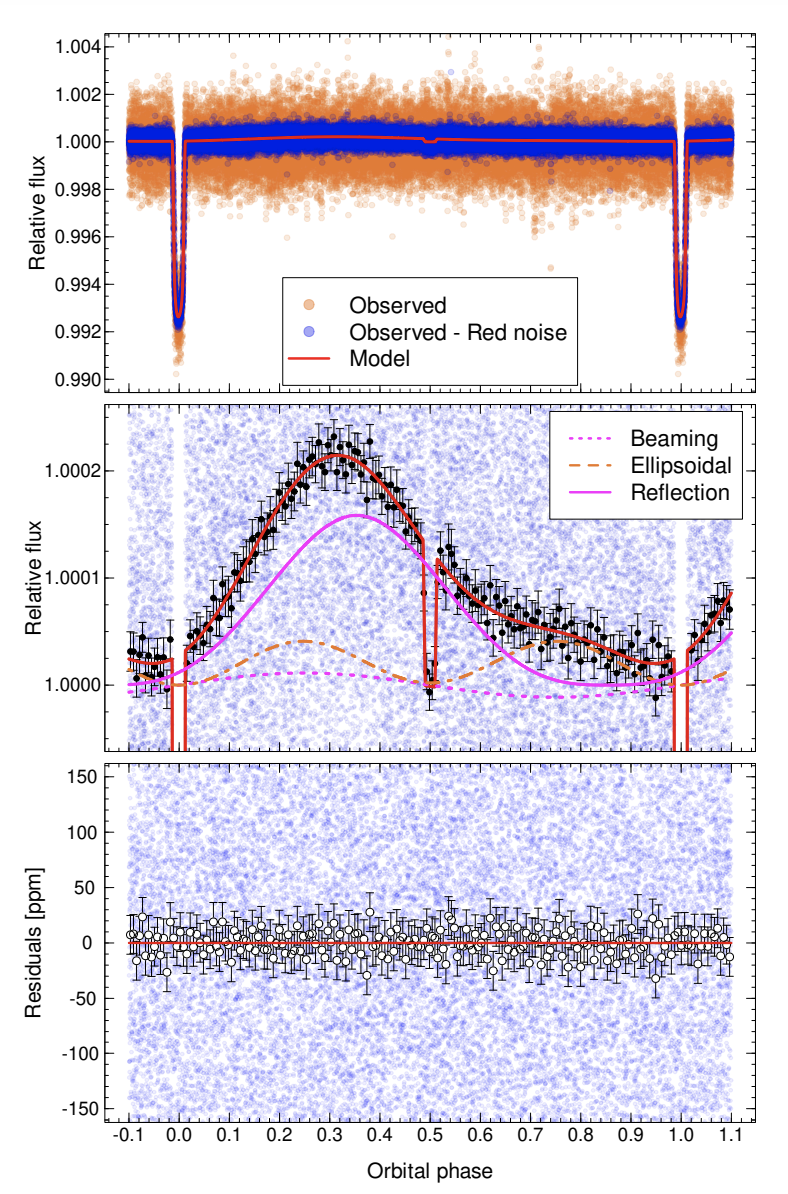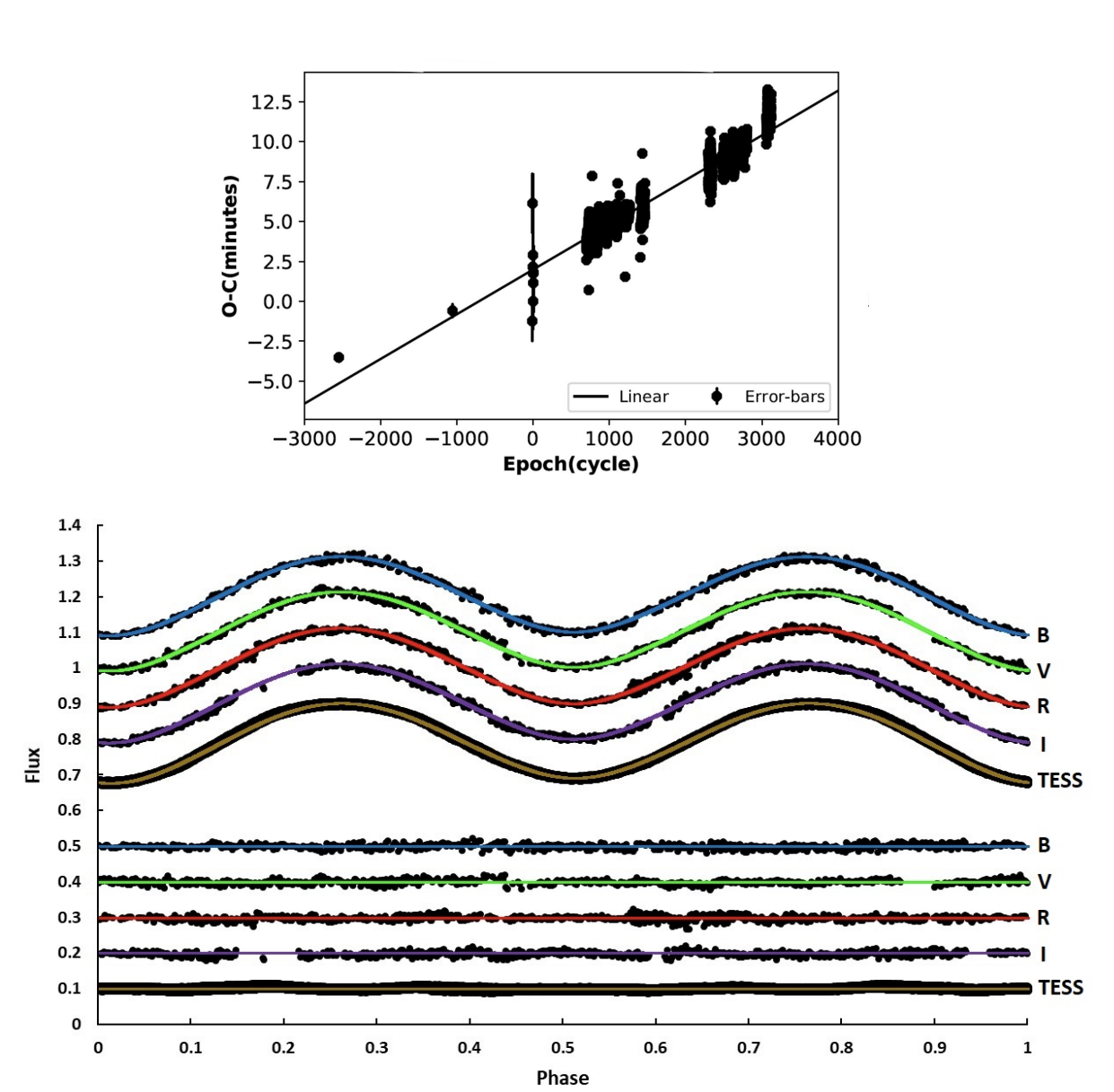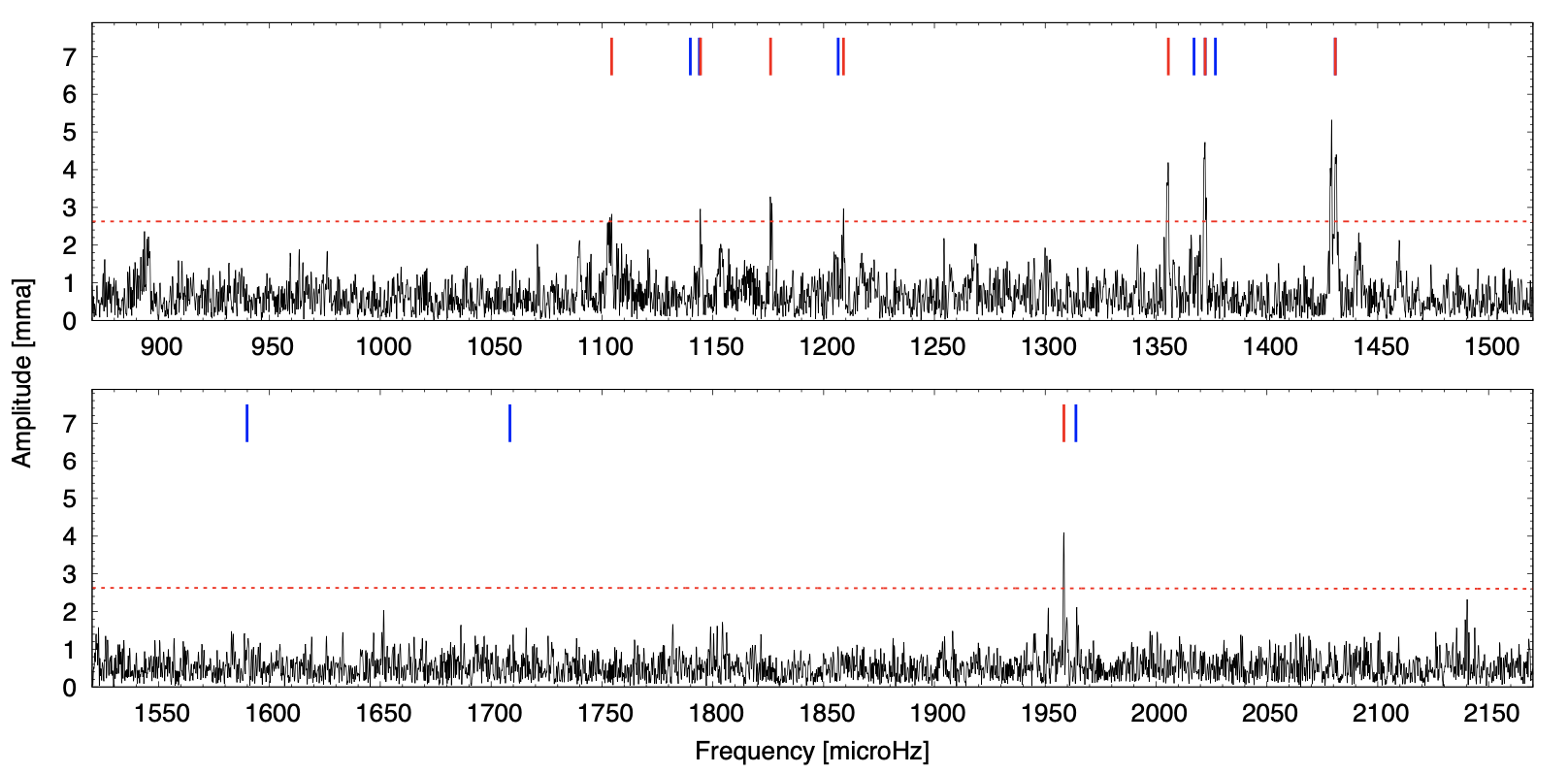Welcome TESS followers to our latest news bulletin! This week, we are looking at three recent papers from the archive. Enjoy!
Discovery of a substellar companion in the TESS light curve of the δ Scuti/γ Doradus hybrid pulsator HD 31221 (Kalman et al. 2023) :
Substellar companions to A- and F-type stars are rare, with only a handful of known exoplanets and brown dwarfs detected around delta Scuti stars through transit photometry. Such systems are excellent laboratories for constraining the atmospheric properties of the companions through phase curve analysis, as well as for testing models of planet formation and evolution. Kalman et al. (2023) present the discovery of a substellar companion to HD 31221, a relatively bright (V = 8 mag) A2 star observed by TESS in Sectors 43 and 44 at a 2-min cadence. The substellar companion produced nine transits separated by 4.66 days, which the authors confirmed to be on-target. Kalman et al. (2023) combined the TESS lightcurves with photometry from MuSCAT2, speckle interferometry from the SAR telescope, and spectroscopic measurements from TRES to constrain the orbital and physical parameters of the system. The authors classify HD 31221 as a hybrid δ Scuti/γ Doradus pulsator with a mass of about 1.45 MSun, radius of 1.55 RJup, and effective temperature of about 7700 K. As the star is a rapid rotator (Vsini = 175 km/sec), the detected transits are asymmetric due to gravity darkening. Kalman et al. (2023) model the observed out-of-transit modulations in the lightcurve utilizing Doppler beaming, ellipsoidal and reflection effects. Noting that the lightcurve is dominated by the latter, they estimate the companion's mass to be M = 11.5+/-10.3 MJup (based on the ellipsoidal variation), indicating that it is either a brown dwarf of a massive giant planet. The radius of the companion is 1.3 RJup and its orbit is misaligned with respect to the spin axis of the host star, such that the obliquity is about -121.6 degrees. Kalman et al. (2023) estimate that the companion's albedo is about 1.58, found an occultation depth of 99+/-9 ppm, and, measuring a 52 degrees offset between the substellar point and the brightest region of the companion's atmosphere, argue that the latter might be cloudy. Thanks to TESS, the authors were able to add a new member to the still-small family of substellar companions to early-type pulsators.
Light Curve Analysis of the AP Dor Binary System using Ground-Based and TESS Observations (Poro et al. 2023) :
AP Dor is an overcontact binary system where both components are tidally distorted, have exceeded their respective Roche lobes, and share an envelope with a similar effective temperature. It is a V = 9.3 magnitude W Ursae Majoris-type eclipsing binary with an orbital period of 0.42 days exhibiting a sine-like lightcurve with no sharp eclipses. Poro et al. (2023) present a detailed analysis of the system aimed at constraining its physical and orbital parameters based on twelve sectors of TESS data (1, 4, 6, 8, 10, 13, 27, 30, 31, 32, 34, and 39) and follow-up observations from the HSH telescope. The authors combine all available photometry with Gaia data to model the system with the PHOEBE code and update the ephemeris through MCMC analysis. The authors note that the orbital period of AP Dor is listed in the AAVSO catalog as 0.42 days but 0.21 days in the ASAS3 catalog. They measured a total of 1330 eclipse times, found no significant deviations from a linear ephemeris, and confirmed the period to be 0.42 days. For their analysis, Poro et al. (2023) assumed gravity darkening of 0.32 and bolometric albedos of 0.5 for both components of the binary, extinction coefficient A = 0.035, and tested three different effective temperatures for the primary (6517 K, 6396 K, and 6530 K). The estimated parameters of the system are as follows: the primary/secondary mass, radius, effective temperature, and stellar type are 1.28/0.75 MSun, 1.36/1.11 RSun, 6585/6302 K, and F5/F7, respectively. The semi-major axis of the binary is 3.02 RSun, the inclination is 53 degrees, and the phase shift of the secondary eclipses is 0.006. Poro et al. (2023) note that both the primary and the secondary stars are positioned between the Zero-Age Main Sequence and the Terminal-Age Main Equation region of the HR diagram, measure an angular orbital momentum of the system 51.85 and estimate a fill-out factor of 48.8%, firmly placing it in the regime of overcontact binaries. TESS data enabled a detailed analysis of AP Dor that helped confirm the orbital period and classification of the system, and refine its properties.
ZZ Ceti stars of the southern ecliptic hemisphere re-observed by TESS (Bognar et al. 2023) :
ZZ Ceti stars (also known as DAV) represent the most common type of pulsating White Dwarfs (WDs), with typical periods of 100-1,500 sec and amplitudes of about 0.1%. While the range of effective temperatures of these stars is relatively narrow (~10,500 to ~13,000 K), the produced pulsations are rather diverse. For example, the outbursts produced by cool DAVs can be irregular and are often difficult to predict. Bognar et al. (2023) present the results from a detailed study of 13 southern ZZ Ceti stars observed by TESS in two separate epochs. The targets are relatively faint (typical G ~ 14-15 mag), were first observed in Cycle 1 with a 2-min cadence (results reported in a previous paper), and then again in Cycle 3 and 4 with a 20-sec cadence. The authors found that four of the thirteen targets do not exhibit significant pulsation frequencies. For the remaining nine targets, Bognar et al. (2023) compared the corresponding pulsation behaviors between the two epochs (Cycle 1 vs Cycle 3+4) utilizing a Fourier analysis and performed an astroseismological analysis with the WD Evolution Code. Seven of the nine targets show clear pulsation frequencies -- Ross 548, EC 23487-2424, BPM 31594, BPM 30551, MCT 0145-2211, L 19-2, and HS 1013+0321, some of which are possible new detections. The results from the asteroseismological analysis are consistent with the distances measured from Gaia. Of the remaining two, HE 0532-5605 exhibits brightening episodes consistent with a recurring phenomenon, leading the authors to suggest that it is a new outbursting ZZ Ceti star near the red edge. The observed brightening of the other target, WD J0925+0509 is a false positive caused by a foreground Solar System object crossing the field of view. TESS data was critical for improving the measured parameters of the examined systems and demonstrated the high value of short-cadence observations to the study of WDs in general, and ZZ Ceti pulsators in particular.

Fig. 1: Taken from Kalman et al. (2023). Phase-folded lightcurves of HD 31221 from TESS. Upper panel: Full lightcurve (orange color) along with the best-fit models (blue and red colors). Middle panel: same as above but zoomed-in on the occultation and highlighting the binned data (black symbols), as well as the individual Beaming, Ellipsoidal, and Reflection contributions to the out-of-transit data. Lower panel: Corresponding residuals.

Fig. 2: Taken from Poro et al. (2023). Upper panel: Measured eclipses times for AP Dor (small symbols) compared to a linear ephemeris (solid line). Lower panel: Phase-folded lightcurve of the system from TESS and ground-based follow-up, as labeled.

Fig. 3: Taken from Bognar et al. (2023). Fourier transform of the TESS lightcurve of the ZZ Ceti star EC 23487-2424. The blue markers represent frequencies detected from one epoch of TESS observations (Cycle 1) and the red markers represent new detections from the combined Cycle 1 and Cycle 3 data.